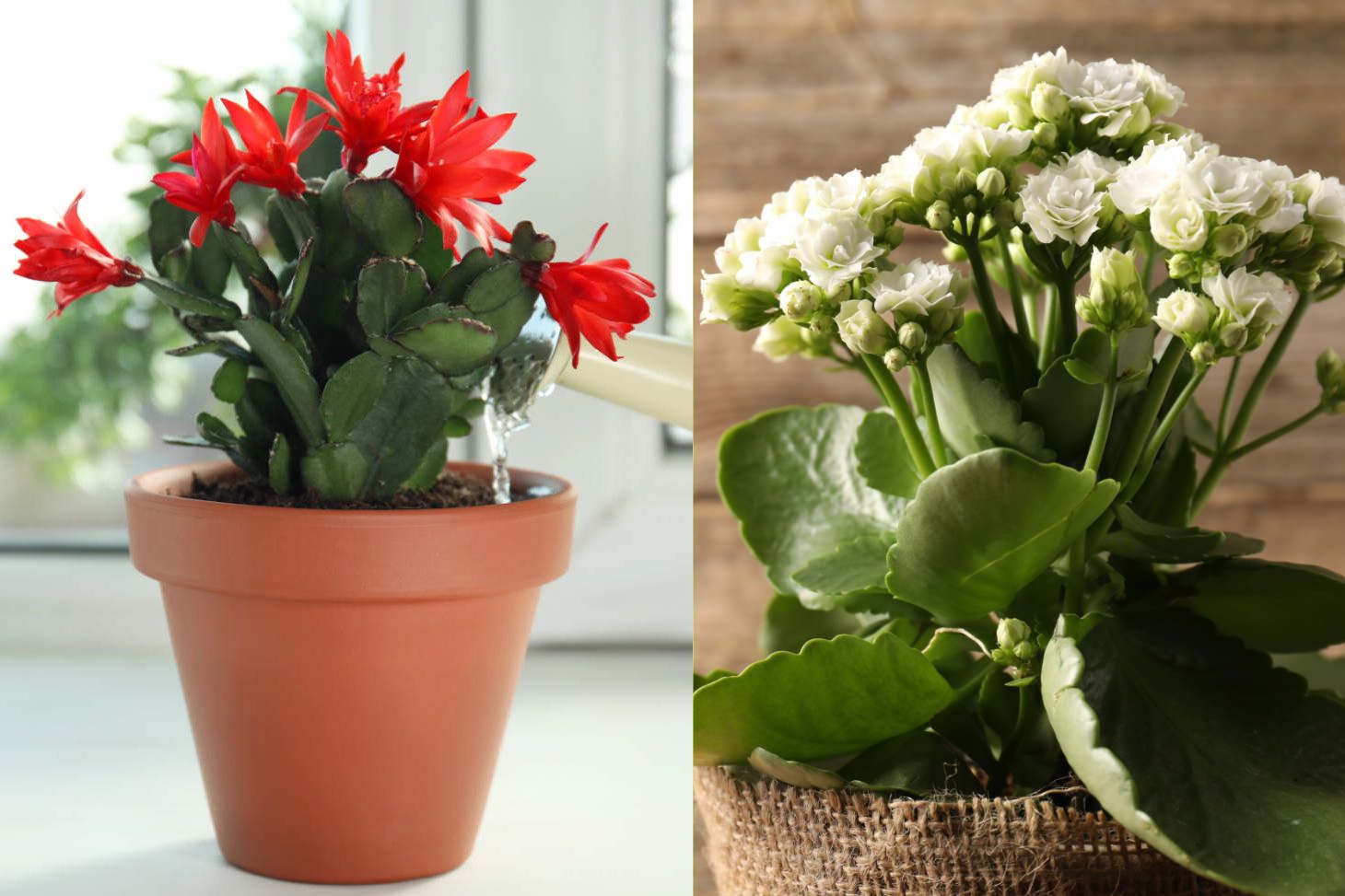Christmas Cactus vs. Kalanchoe
When you think about holiday plants, Christmas cactus and kalanchoe are often at the top of the list. Both bring color and life to your home in the holiday season, but they are quite different in how they look and what they need to thrive. Christmas cactus has trailing stems with bright, delicate flowers, while kalanchoe is a succulent with thick leaves and clusters of small, vibrant blooms.
If you’re trying to decide which one fits your home or routine, understanding their differences can help you make the best choice. You’ll want to know how much light, water, and care each plant requires, especially during the busy holiday season. With the right plant, you can enjoy healthy, blooming holidays every year.
Key Differences Between Christmas Cactus and Kalanchoe
Christmas cactus and kalanchoe are both popular indoor flowering plants, but they look and grow quite differently. Their shapes, leaves, and blooming habits can help you easily tell them apart.
Plant Structure and Appearance

The Christmas cactus has flat, segmented stems that look more like leaves than branches. Each segment is smooth with slight scalloping along the edges. The plant grows in a somewhat arching or trailing habit, often spilling over the sides of its pot.
By comparison, kalanchoe is a type of succulent with thick, fleshy green leaves. The leaves are usually oval or paddle-shaped, sometimes edged with a slight pink or red color. Kalanchoe has a more upright growth and may form compact clumps. The texture of kalanchoe leaves feels firm and waxy, helping the plant store water.
While Christmas cacti are epiphytic, often growing on trees in the wild, kalanchoe grows in soil. Many Kalanchoe species naturally have leaves with scalloped or toothed edges and do not trail in the same way as christmas cacti.
Flowering Habits and Blooming Periods
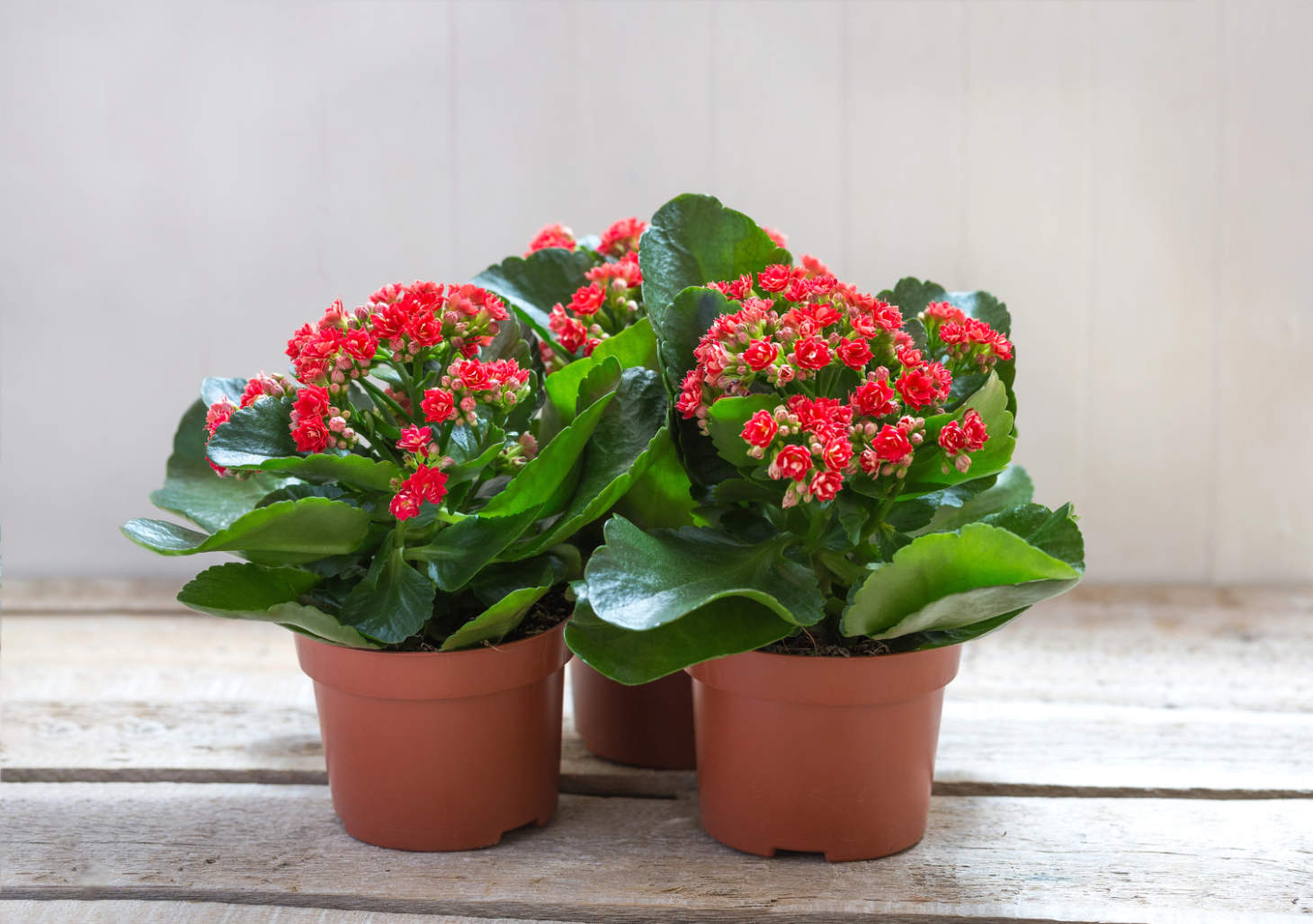
Christmas cactus blooms in the late fall or winter, triggered by short days and cooler night temperatures. You will often see the colorful, tube-shaped flowers appear around November or December. The blooms grow from the tips of the stem segments and can last for several weeks when kept cool.
Kalanchoe also produces bright flowers but tends to bloom in late winter or early spring. The flowers are small but grow in dense clusters above the main foliage and come in many colors like pink, red, yellow, and white. Unlike the Christmas cactus, kalanchoe flowers last for many weeks but often need more sunlight to re-bloom indoors.
Both are perennial flowering plants, but their re-blooming needs are different. Christmas cactus needs longer nights to set buds again, while kalanchoe requires a period of dry rest after blooming.
Care Requirements for Each Plant
Christmas cactus and kalanchoe have different care needs, especially regarding light, temperature, and watering. Knowing these details can help you keep your houseplants healthy and thriving.
Light and Temperature Needs
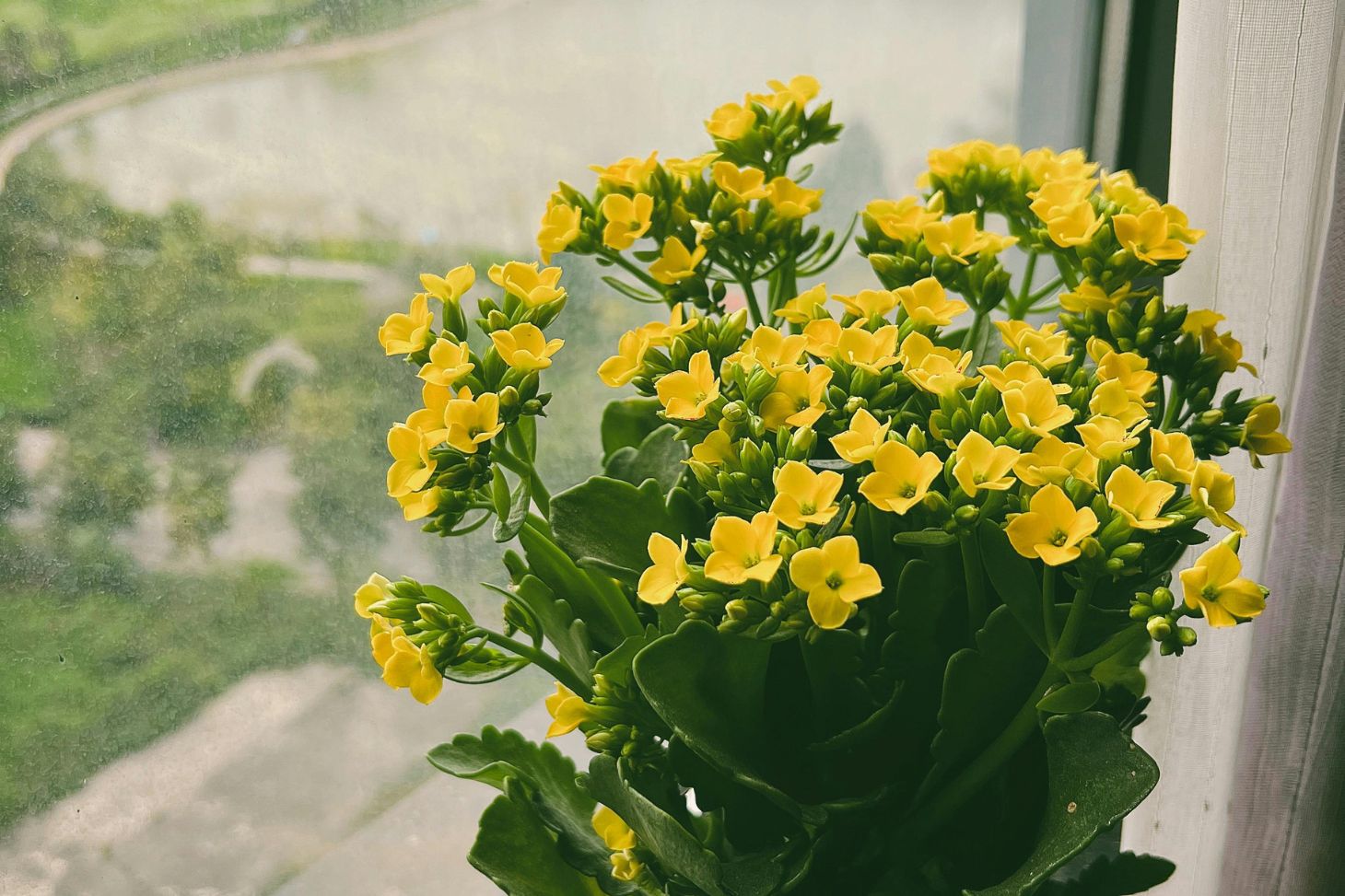
Christmas cactus likes bright, indirect light. Too much direct sunlight can burn its leaves. A spot near a north or east-facing window works well. The best temperature for this plant is between 60–70°F (15–21°C) during the day. It can handle slightly cooler nights but should not be exposed to frost.
Kalanchoe prefers bright light and can handle some direct sunlight. Placing it in a south-facing window will help it bloom more. This succulent grows well at temperatures between 60–85°F (15°C to 29°C) but must be kept away from cold drafts or temperatures below 50°F (10°C).
Watering, Feeding, and Common Pitfalls
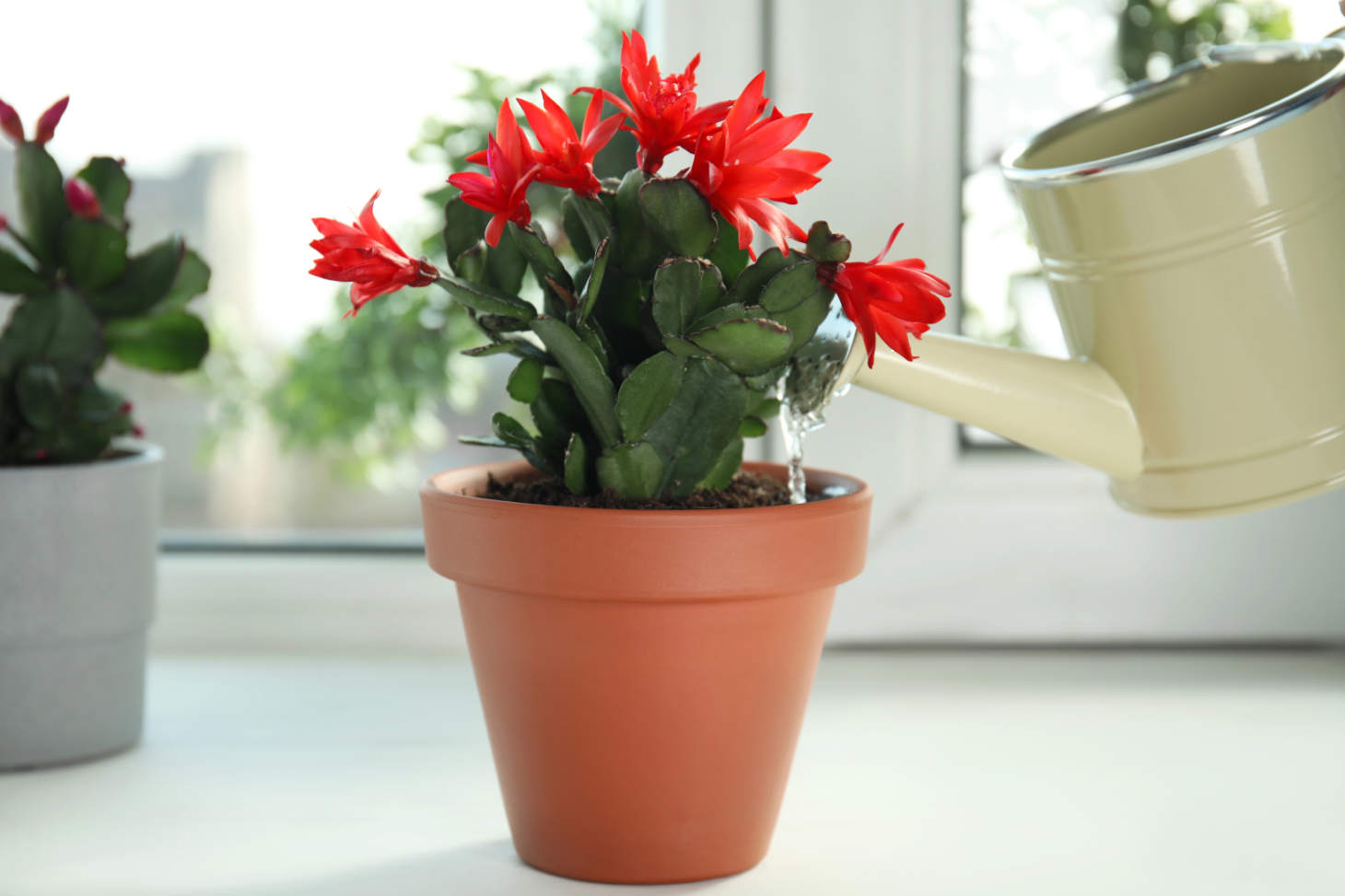
Christmas cactus likes the soil to stay slightly moist. Water well when the top inch of the soil feels dry, but do not let water sit in the pot tray. Over-watering can cause root rot. It benefits from water-soluble plant food during the growing season.
Kalanchoe does best with well-drained soil. Let the soil dry out a bit between waterings, as this succulent stores water in its leaves. Over-watering is a common issue and leads to root rot. Feed kalanchoe lightly with a diluted fertilizer once a month while it is actively growing.
Key reminders:
- Christmas cactus: avoid letting the soil get soggy.
- Kalanchoe: be careful not to over-water; drought resistance is higher than the cactus.
- Both plants need pots with good drainage holes.
Holiday Appeal and Decorative Uses
Christmas cactus and kalanchoe both stand out as festive plants, valued for their bright flowers and easy care during the winter months. These houseplants can brighten your home or serve as thoughtful gifts during the holiday season.
Role in Holiday Traditions
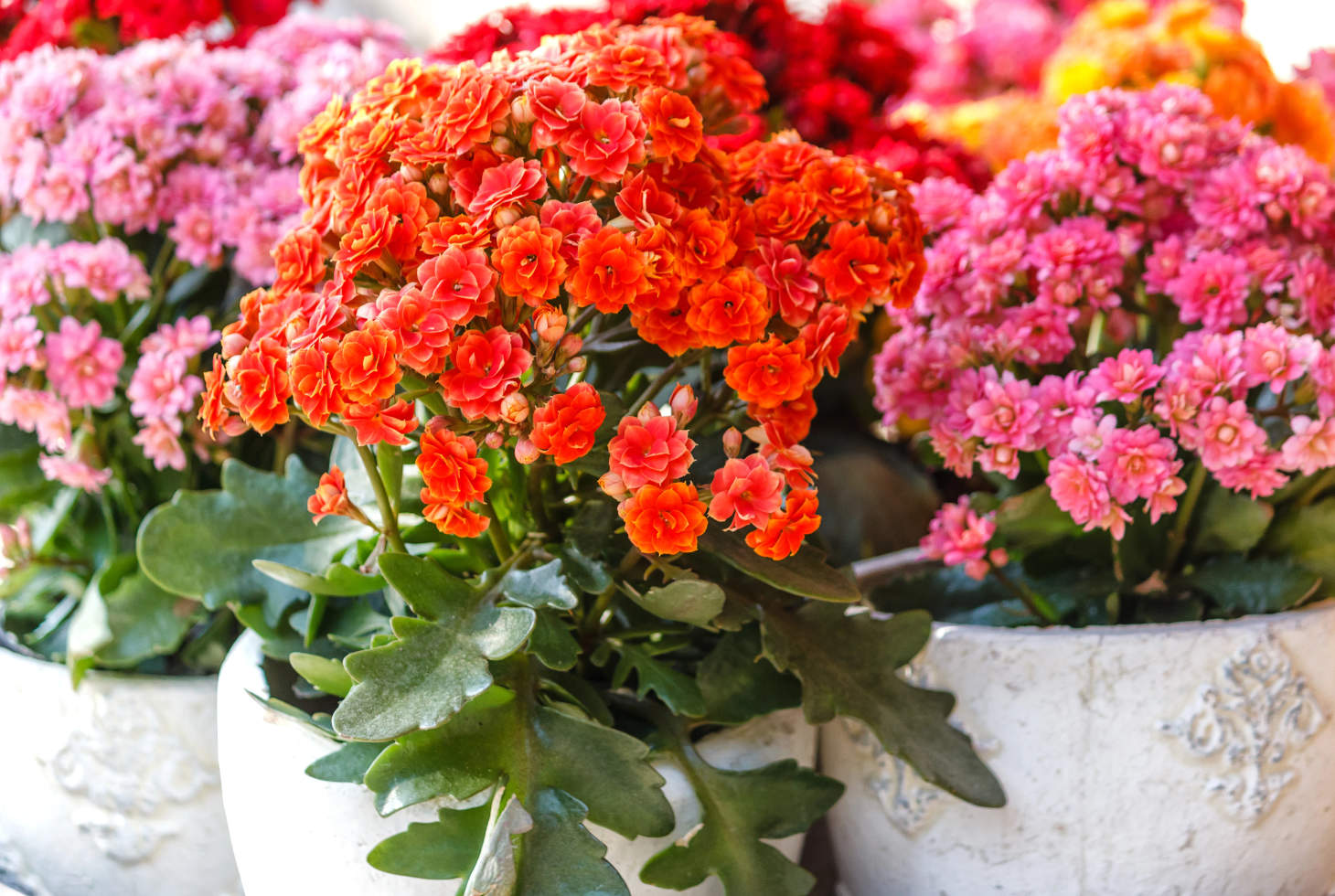
The Christmas cactus appears in many homes each December. Its flowers, which can be pink, red, white, or purple, often open right around Christmas. The plant’s arching stems and drooping blooms look pretty on windowsills and tables.
Kalanchoe is also used for holiday decorating. With its clusters of small flowers in colors like red, yellow, orange, or pink, kalanchoe can add color to your holiday displays. Many people gift kalanchoe in decorated pots, which can last well beyond the holidays with proper care.
Both christmas cactus and kalanchoe are easy to maintain indoors. While they don’t require excessive watering, they thrive in bright, indirect light. This makes them suitable for decorating areas where other plants might not flourish, provided their specific light needs are met. While they are popular for Christmas, they can continue to bloom and look lovely even after the season ends.
Potential Issues and Troubleshooting
Christmas cactus and kalanchoe each face some common problems, especially with pests and diseases. Knowing what to look for and how to respond will help you keep your plants healthy.
Common Pests and Diseases
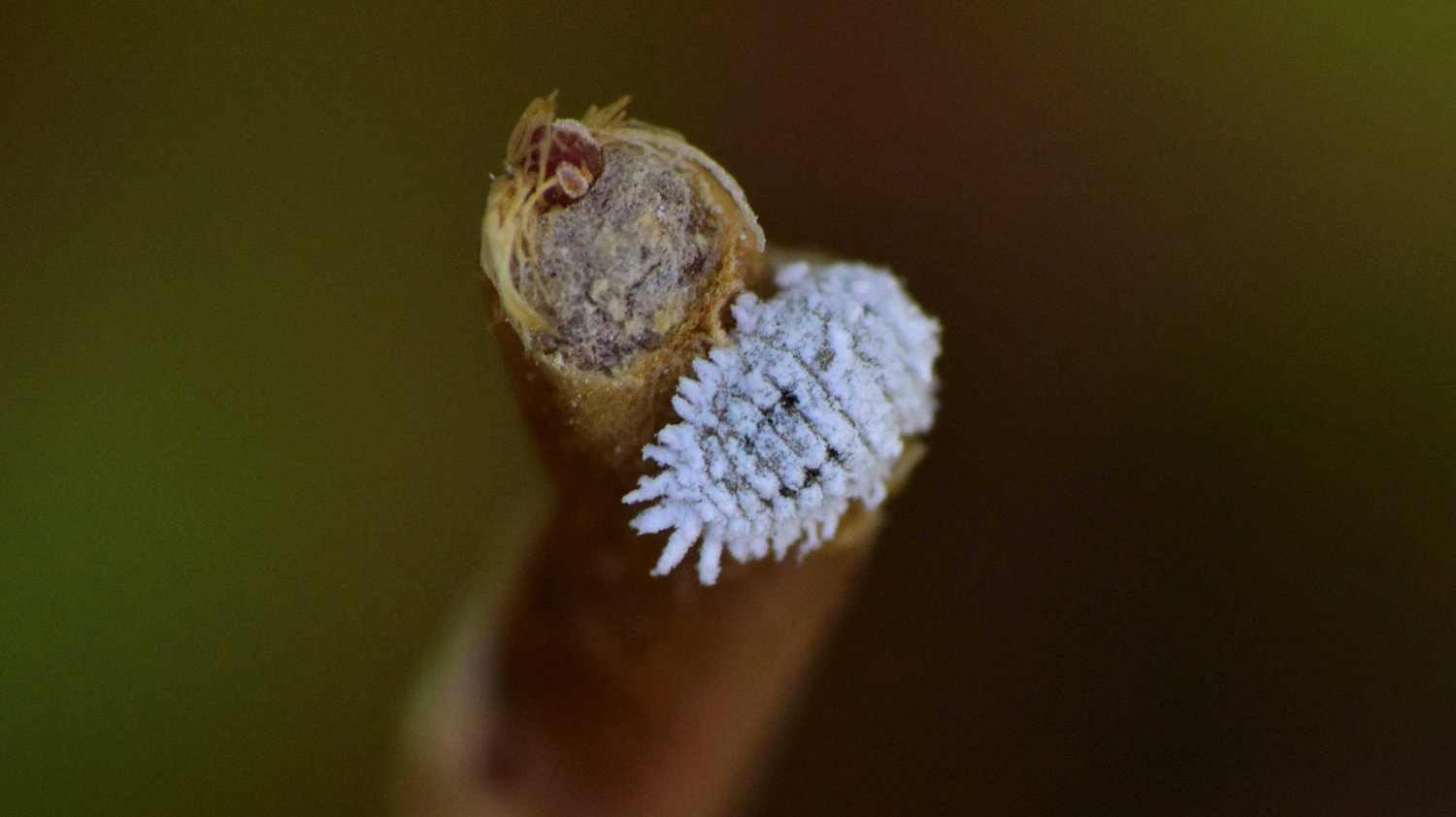
Both plants are at risk for some pests like mealybugs and fungus gnats. Mealybugs appear as white, cottony patches on leaves and stems. You can remove them by wiping the plant with rubbing alcohol on a cotton swab.
Christmas cactus can get root rot if the soil stays wet. This causes the roots to look brown and mushy. Always use a pot with drainage and avoid overwatering. Kalanchoe is more prone to powdery mildew, which looks like a white dust on leaves. Increase air flow and avoid getting the leaves wet to manage this.
Check your plants often and treat problems quickly to prevent them from spreading. Using clean pots and tools can help keep pests and diseases away.
Frequently Asked Questions
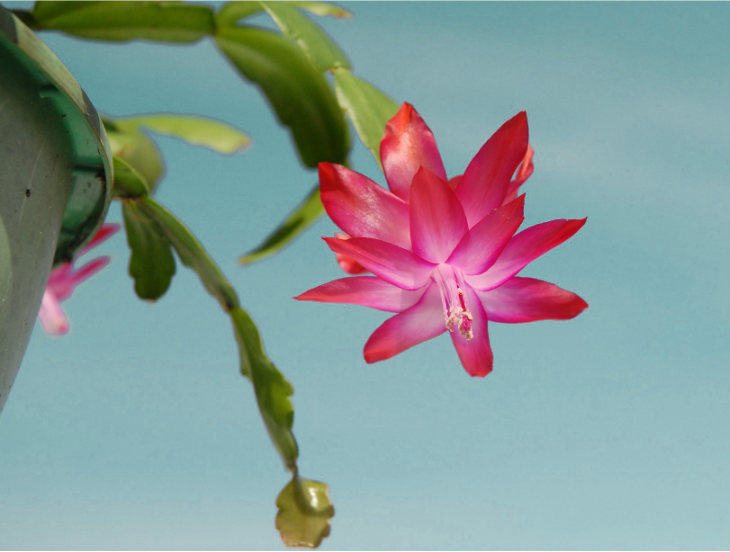
Christmas cactus and kalanchoe have different care needs, light and water requirements, and blooming times. You should also be aware of their separate propagation methods and possible growing issues indoors.
How do you differentiate between care requirements for Christmas cactus and kalanchoe?
You need to keep the Christmas cactus in evenly moist, well-draining soil, especially during the growing and blooming seasons. Kalanchoe, which is a succulent, prefers to dry out between thorough waterings and should not sit in wet soil.
Christmas cactus thrives in humidity and benefits from regular misting, while kalanchoe prefers drier air.
Can the Christmas cactus and kalanchoe thrive in similar environments?
Both plants can do well indoors, but their ideal conditions differ. Christmas cactus prefers cooler temperatures and indirect sunlight. Kalanchoe does best in bright, indirect light with warmer temperatures and can handle less humidity.
It’s important not to place either plant in direct, harsh sunlight, as that can damage both.
What are the water and light needs for a Christmas cactus compared to a kalanchoe?
A Christmas cactus needs more frequent watering and likes soil that stays just a bit damp, but never soggy. Kalanchoe should be watered only when the soil is dry, as it stores water in its leaves.
For light, Christmas cactus prefers bright but filtered light, while kalanchoe needs lots of bright, indirect light to bloom well.
Are there any common issues when cultivating Christmas cactus or kalanchoe indoors?
Christmas cactus can drop buds or leaves if exposed to sudden drafts or if the soil stays too dry or too wet. Overwatering and poor drainage can lead to root rot.
Kalanchoe might develop leaf spots or rot from too much water. Lack of blooms is usually caused by not enough light or too much water.
What are the blooming characteristics that distinguish Christmas cactus from kalanchoe?
Christmas cactus produces flowers in pink, red, white, or purple, usually in late fall or early winter. Its flowers are tubular and appear at the ends of the flat stems.
Kalanchoe blooms can be red, pink, yellow, orange, or white. The flowers are small but grow in tight clusters above the leaves and generally appear in late winter to spring.
How can you propagate Christmas cactus and kalanchoe, and are the methods different?
You can propagate Christmas cactus using stem cuttings that are left to dry for a day and then planted in moist soil. Kalanchoe can be propagated from leaf or stem cuttings; allow them to dry for a few hours, then place them in well-draining soil.
Both plants root fairly easily, but the kalanchoe often starts new plants from dropped leaves or plantlets along the edges of mature leaves.

